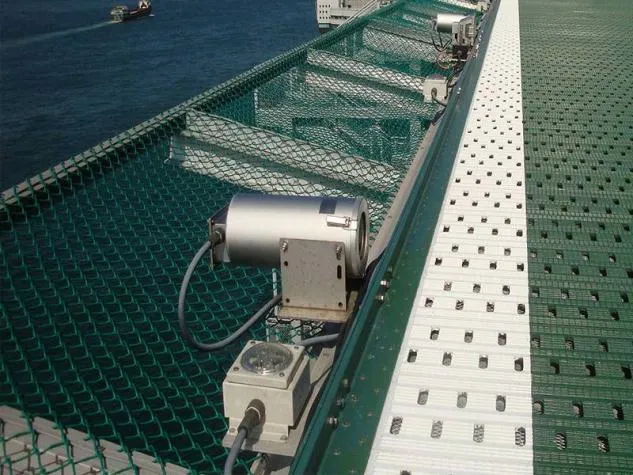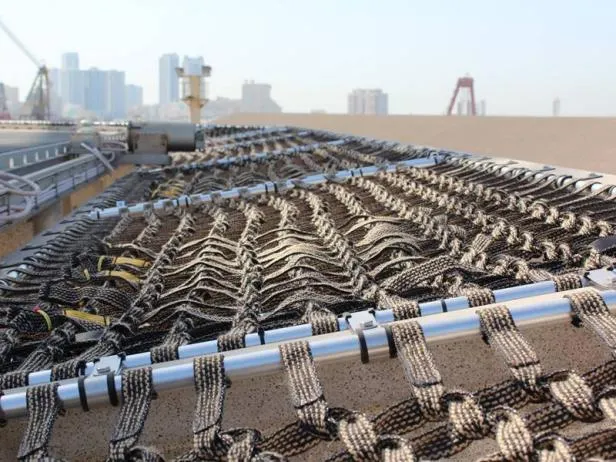- Industrial zone, South of Anping Town, Hengshui, Hebei, China.
- sales@hfpetromesh.com
- +86-18931809706
 Afrikaans
Afrikaans  Albanian
Albanian  Amharic
Amharic  Arabic
Arabic  Armenian
Armenian  Azerbaijani
Azerbaijani  Basque
Basque  Belarusian
Belarusian  Bengali
Bengali  Bosnian
Bosnian  Bulgarian
Bulgarian  Catalan
Catalan  Cebuano
Cebuano  Corsican
Corsican  Croatian
Croatian  Czech
Czech  Danish
Danish  Dutch
Dutch  English
English  Esperanto
Esperanto  Estonian
Estonian  Finnish
Finnish  French
French  Frisian
Frisian  Galician
Galician  Georgian
Georgian  German
German  Greek
Greek  Gujarati
Gujarati  Haitian Creole
Haitian Creole  hausa
hausa  hawaiian
hawaiian  Hebrew
Hebrew  Hindi
Hindi  Miao
Miao  Hungarian
Hungarian  Icelandic
Icelandic  igbo
igbo  Indonesian
Indonesian  irish
irish  Italian
Italian  Japanese
Japanese  Javanese
Javanese  Kannada
Kannada  kazakh
kazakh  Khmer
Khmer  Rwandese
Rwandese  Korean
Korean  Kurdish
Kurdish  Kyrgyz
Kyrgyz  Lao
Lao  Latin
Latin  Latvian
Latvian  Lithuanian
Lithuanian  Luxembourgish
Luxembourgish  Macedonian
Macedonian  Malgashi
Malgashi  Malay
Malay  Malayalam
Malayalam  Maltese
Maltese  Maori
Maori  Marathi
Marathi  Mongolian
Mongolian  Myanmar
Myanmar  Nepali
Nepali  Norwegian
Norwegian  Norwegian
Norwegian  Occitan
Occitan  Pashto
Pashto  Persian
Persian  Polish
Polish  Portuguese
Portuguese  Punjabi
Punjabi  Romanian
Romanian  Russian
Russian  Samoan
Samoan  Scottish Gaelic
Scottish Gaelic  Serbian
Serbian  Sesotho
Sesotho  Shona
Shona  Sindhi
Sindhi  Sinhala
Sinhala  Slovak
Slovak  Slovenian
Slovenian  Somali
Somali  Spanish
Spanish  Sundanese
Sundanese  Swahili
Swahili  Swedish
Swedish  Tagalog
Tagalog  Tajik
Tajik  Tamil
Tamil  Tatar
Tatar  Telugu
Telugu  Thai
Thai  Turkish
Turkish  Turkmen
Turkmen  Ukrainian
Ukrainian  Urdu
Urdu  Uighur
Uighur  Uzbek
Uzbek  Vietnamese
Vietnamese  Welsh
Welsh  Bantu
Bantu  Yiddish
Yiddish  Yoruba
Yoruba  Zulu
Zulu
- Afrikaans
- Albanian
- Amharic
- Arabic
- Armenian
- Azerbaijani
- Basque
- Belarusian
- Bengali
- Bosnian
- Bulgarian
- Catalan
- Cebuano
- Corsican
- Croatian
- Czech
- Danish
- Dutch
- English
- Esperanto
- Estonian
- Finnish
- French
- Frisian
- Galician
- Georgian
- German
- Greek
- Gujarati
- Haitian Creole
- hausa
- hawaiian
- Hebrew
- Hindi
- Miao
- Hungarian
- Icelandic
- igbo
- Indonesian
- irish
- Italian
- Japanese
- Javanese
- Kannada
- kazakh
- Khmer
- Rwandese
- Korean
- Kurdish
- Kyrgyz
- Lao
- Latin
- Latvian
- Lithuanian
- Luxembourgish
- Macedonian
- Malgashi
- Malay
- Malayalam
- Maltese
- Maori
- Marathi
- Mongolian
- Myanmar
- Nepali
- Norwegian
- Norwegian
- Occitan
- Pashto
- Persian
- Polish
- Portuguese
- Punjabi
- Romanian
- Russian
- Samoan
- Scottish Gaelic
- Serbian
- Sesotho
- Shona
- Sindhi
- Sinhala
- Slovak
- Slovenian
- Somali
- Spanish
- Sundanese
- Swahili
- Swedish
- Tagalog
- Tajik
- Tamil
- Tatar
- Telugu
- Thai
- Turkish
- Turkmen
- Ukrainian
- Urdu
- Uighur
- Uzbek
- Vietnamese
- Welsh
- Bantu
- Yiddish
- Yoruba
- Zulu
ફેબ્રુવારી . 20, 2025 01:38
Back to list
galvanised steel walkway
Galvanised steel walkways are becoming an indispensable component in various commercial and industrial projects. These sturdy structures are utilized in everything from factories to public transportation hubs, offering a dependable, long-lasting solution for pedestrian and equipment navigation. Understanding the reasons for their widespread adoption entails a closer look at their features, advantages, and applications.
The authoritativeness of galvanised steel walkways is further evidenced by their widespread endorsement from engineering professionals and architects who regularly choose these structures for their projects. This is largely because galvanised steel combines flexibility with unparalleled structural integrity, supporting significant weight without compromising safety. Civil and manufacturing engineers appreciate the low maintenance nature of these walkways as they can be relied upon to endure the stress of heavy machinery and pedestrian traffic. Additionally, these walkways are often tested and certified by industry-standard organizations, adding a layer of trust and credibility to their application. Trustworthiness in regards to galvanised steel walkways is evident through real-world applications and feedback from end-users. For instance, public transit systems that incorporate these walkways report substantially heightened safety for daily commuters, thereby increasing public trust and satisfaction in public amenities. Similarly, in manufacturing settings, where dependable movement of goods is vital, businesses have noted enhanced logistical efficiency and reduced downtimes thanks to the reliability of galvanised walkways. Testimonials from facility managers underscore the trust placed in these systems, noting not only their resilience in adverse environmental conditions but also their capacity to remain free of structural deformation under constant use. In conclusion, galvanised steel walkways stand out as a product category whose benefits are brilliantly aligned with the core principles of experience, expertise, authoritativeness, and trustworthiness. Their high durability, unsurpassed safety features, and customization potential make them a staple in industrial and commercial environments. Coupled with endorsements from professionals and positive feedback from end-users, these walkways are a testament to modern engineering's capability to produce solutions that address both practical needs and economic considerations. As industries continue to evolve and standards become more stringent, the role of galvanised steel walkways is set to become even more entrenched, securing their place as a pivotal component of future industrial landscapes.


The authoritativeness of galvanised steel walkways is further evidenced by their widespread endorsement from engineering professionals and architects who regularly choose these structures for their projects. This is largely because galvanised steel combines flexibility with unparalleled structural integrity, supporting significant weight without compromising safety. Civil and manufacturing engineers appreciate the low maintenance nature of these walkways as they can be relied upon to endure the stress of heavy machinery and pedestrian traffic. Additionally, these walkways are often tested and certified by industry-standard organizations, adding a layer of trust and credibility to their application. Trustworthiness in regards to galvanised steel walkways is evident through real-world applications and feedback from end-users. For instance, public transit systems that incorporate these walkways report substantially heightened safety for daily commuters, thereby increasing public trust and satisfaction in public amenities. Similarly, in manufacturing settings, where dependable movement of goods is vital, businesses have noted enhanced logistical efficiency and reduced downtimes thanks to the reliability of galvanised walkways. Testimonials from facility managers underscore the trust placed in these systems, noting not only their resilience in adverse environmental conditions but also their capacity to remain free of structural deformation under constant use. In conclusion, galvanised steel walkways stand out as a product category whose benefits are brilliantly aligned with the core principles of experience, expertise, authoritativeness, and trustworthiness. Their high durability, unsurpassed safety features, and customization potential make them a staple in industrial and commercial environments. Coupled with endorsements from professionals and positive feedback from end-users, these walkways are a testament to modern engineering's capability to produce solutions that address both practical needs and economic considerations. As industries continue to evolve and standards become more stringent, the role of galvanised steel walkways is set to become even more entrenched, securing their place as a pivotal component of future industrial landscapes.
Share
Prev:
Next:
Latest news
-
Welded Steel Bar Grating: The Rugged Industrial Flooring Solution Built for Load and LongevityNewsJun.24,2025
-
Steel Walkway Grating: Reliable, Resilient, and Built for Every StepNewsJun.24,2025
-
Shale Shaker Screen for Sale: Optimize Drilling Efficiency with Precision Screening PowerNewsJun.24,2025
-
Shaker Screen for Sale: Elevate Your Drilling Efficiency with Durable Separation SolutionsNewsJun.24,2025
-
Press Locked Steel Grating: Industrial Strength with Precision Fit for Heavy-Duty ApplicationsNewsJun.24,2025
-
Perimeter Safety Netting: The Critical Safety Upgrade for Every HelipadNewsJun.24,2025